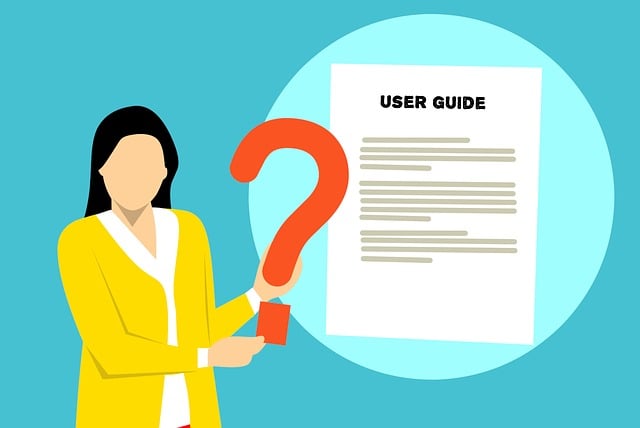UK Educational Textbooks Translation Services bridge language gaps in education by providing multilingual resources for diverse learners. They ensure accessibility through accurate translations, cultural awareness, and inclusive language, fostering an equal learning environment. These services enhance student engagement, support ELLs, and promote active participation, leveraging technology to create a more inclusive future of education globally.
In today’s globalized world, ensuring accessibility to educational content is paramount. This article explores strategies to enhance learning experiences for all students, focusing on the pivotal role of translation services. We delve into the unique challenges faced in UK educational textbooks and how professional translation can break down language barriers. From increasing student engagement to fostering cultural understanding, discover best practices and future trends that make quality education accessible worldwide, with a special emphasis on UK Educational Textbooks Translation Services.
- Understanding Accessibility Barriers in Education
- The Role of Translation Services for Inclusion
- UK Educational Textbooks: A Cultural Bridge
- Breaking Down Language Walls in Learning
- Enhancing Student Engagement Through Translation
- Best Practices for Accurate Content Adaptation
- Future Trends in Educational Accessibility
- Impact of Accessible Textbooks on Learners
Understanding Accessibility Barriers in Education

Accessibility barriers in education can stem from a variety of sources, including physical environments that are not designed for all students, digital content that lacks alternative formats, and language differences that make it difficult for non-native speakers to engage with educational materials. In the UK, where inclusivity is a cornerstone of the education system, understanding these barriers is essential. For instance, UK educational textbooks translation services play a vital role in ensuring accessibility for students from diverse linguistic backgrounds.
By providing translated textbooks and resources, these services help to bridge the gap between language and learning. This is particularly important for students who may be struggling with English as an additional language (EAL). Accessible content not only includes text but also encompasses multimedia elements such as graphics, videos, and interactive components. Ensuring that all educational materials are available in multiple formats and languages fosters a more inclusive learning environment where every student can participate fully.
The Role of Translation Services for Inclusion

In today’s diverse and globalized society, ensuring accessibility to educational content is paramount for fostering inclusive learning environments in the UK. One powerful tool that plays a pivotal role in this endeavor is translation services. Specifically, UK Educational Textbook Translation Services have become indispensable in breaking down language barriers and making knowledge accessible to all learners. These services facilitate the adaptation of textbooks and learning materials from diverse linguistic sources, ensuring that students from various ethnic backgrounds can engage with their education on equal footing.
By leveraging professional translation expertise, educational institutions can enhance inclusivity by offering resources in multiple languages. This is especially crucial for non-native English speakers who might face challenges in understanding content originally crafted in a different linguistic context. UK Educational Textbook Translation Services not only preserve the integrity of the original content but also ensure that translated materials meet the specific requirements of the target audience, thereby fostering a more welcoming and inclusive learning atmosphere.
UK Educational Textbooks: A Cultural Bridge

In the UK, educational content plays a pivotal role in shaping young minds and fostering intellectual growth. One significant aspect that deserves attention is the accessibility of textbooks used in schools and universities. UK educational textbooks often carry cultural weight, reflecting the values, history, and perspectives of British society. However, for a diverse student population, ensuring equal access to these resources can be challenging, especially when considering language barriers. This is where UK Educational Textbooks Translation Services step in as game-changers.
These translation services aim to bridge the cultural gap by providing accurate and contextually sensitive translations of educational materials. With a growing non-native English-speaking student body, access to translated textbooks ensures that all learners can actively participate in their education. Moreover, it promotes inclusivity and enables students from various cultural backgrounds to connect with the content on a deeper level, creating a vibrant tapestry of learning experiences.
Breaking Down Language Walls in Learning

Breaking down language barriers is a significant step towards enhancing accessibility to educational content, especially in the UK where diverse linguistic backgrounds are prevalent. Many students struggle with complex terminology and concepts due to language differences, impacting their learning experience. This is where professional translation services for UK educational textbooks play a pivotal role.
These specialized services ensure that textbooks, study materials, and resources are accurately translated, allowing all learners to access the same high-quality content. By bridging this gap, students from various linguistic backgrounds can actively participate in their education, fostering an inclusive learning environment. This initiative promotes equal opportunities for success and ensures no student is left behind due to language-related challenges.
Enhancing Student Engagement Through Translation

In an increasingly diverse educational landscape, enhancing student engagement is paramount. One effective strategy is the provision of translated educational content, especially for non-native speakers. UK Educational Textbooks Translation Services play a vital role in making learning materials accessible to all students. By offering professional translation services, these providers ensure that textbooks, study guides, and other resources are available in multiple languages. This initiative not only supports ELL (English Language Learners) but also fosters inclusivity and encourages active participation in the classroom.
Translated content bridges the communication gap, enabling students to engage with their studies on a deeper level. It allows learners from various linguistic backgrounds to contribute meaningfully during discussions, access online resources, and participate in group activities without language barriers. Moreover, it empowers educators by providing them with tools to cater to diverse learning needs, thereby creating an inclusive educational environment that benefits every student.
Best Practices for Accurate Content Adaptation

When adapting educational content for a diverse range of learners, especially in the context of UK educational textbooks, accuracy is paramount. Reputable translation services should go beyond simple word-for-word substitutions to ensure conceptual and linguistic precision. This involves understanding not just the subject matter but also cultural nuances and academic terminology specific to the target audience.
Best practices include employing native speakers with expertise in education to review translations. They can identify subtle errors or inappropriate phrases that might confuse learners. Additionally, using accessible language and inclusive representations in textbooks fosters an equitable learning environment for all students, regardless of their background or language proficiency.
Future Trends in Educational Accessibility

As technology continues to evolve, future trends in educational accessibility are set to transform learning landscapes across the UK and beyond. One prominent trend is the increased adoption of digital platforms and interactive tools that cater to diverse learning styles and abilities. This shift towards digital education promises improved accessibility for students with special needs, offering customizable content, text-to-speech functionality, and enhanced screen readers.
Additionally, advancements in machine translation services, such as UK educational textbook translation, will play a pivotal role in breaking down language barriers. These services will ensure that students from diverse linguistic backgrounds can access curriculum materials seamlessly, fostering inclusivity and equal opportunities for all learners. This trend not only enhances accessibility but also encourages cultural exchange and a more comprehensive understanding of global perspectives within the classroom.
Impact of Accessible Textbooks on Learners

Accessible textbooks have a profound impact on learners, especially in the diverse and inclusive learning environments of today. By employing UK educational textbooks translation services to make content available in multiple languages, educators can break down language barriers and ensure that every student has equal access to knowledge. This is particularly beneficial for non-native speakers, learners with disabilities, or those from diverse cultural backgrounds who may face challenges in understanding written material in their first language.
Translation services not only facilitate comprehension but also encourage a more inclusive classroom atmosphere. It allows students to engage with the curriculum on a deeper level, participate actively in discussions, and contribute their unique perspectives. Accessible textbooks empower learners by providing them with the tools they need to navigate complex subjects and achieve academic success, fostering a sense of belonging and equal opportunity within the educational setting.
In conclusion, enhancing accessibility in education is no longer a consideration but an imperative. By addressing understanding barriers, leveraging translation services, and embracing innovative solutions like UK educational textbooks, we can create an inclusive learning environment. Breaking down language walls through effective content adaptation not only enhances student engagement but also ensures equal opportunities for all. As we look towards the future, adopting best practices and exploring emerging trends in educational accessibility will be crucial to fostering a global community of learners.
